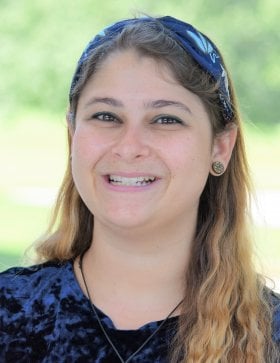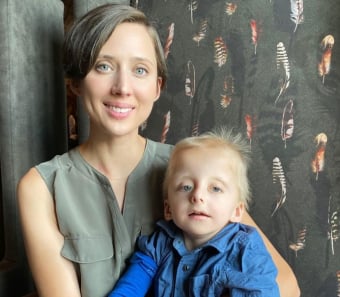
Dr. Matheny joined the laboratory of Dr. Heather Flanagan-Steet at GGC in 2022. After earning her Bachelors in Microbiology from the University of Georgia, she worked for two years as a technician in the Steet laboratory where she discovered a passion for biomedical and translational research. Matheny obtained a PhD in Biochemistry, Cell, and Developmental Biology in the laboratory of Dr. Guy M. Benian at Emory University. When the time came for her to decide where to do her postdoctoral work, she was eager to return to the lab of Dr. Flanagan-Steet and the work that originally drove her to earn a PhD.
Dr. Matheny’s work in graduate school was focused on understanding the molecular mechanisms involved in muscle ageing and how to modulate these mechanisms to prolong the health of the sarcomeric structures within muscle fibers. She utilized the C. elegans nematode model to study the conserved Myosin head chaperone UNC-45, which is responsible for folding and assembling newly synthesized Myosin into the thick filament of the sarcomere, as well as maintaining the Myosin that is already stably assembled in the sarcomere. Dr. Matheny enjoys learning and working with new animal model systems and dreams of being able to utilize multiple models to provide a better understanding of complex biological and biochemical pathways.
At GGC, Dr. Matheny will be using zebrafish to investigate the neuronal pathologies observed in lysosomal storage disorders and congenital disorders of glycosylation. She is interested in discovering whether the pathologies that these disorders share have similar causes that could be treated in similar manners. One of her main areas of focus will be determining how loss of the NogoB receptor (NgBR, NUS1) impacts specific cell types within the hindbrain and if the cholesterol accumulation observed after NgBR loss impairs myelination and/or increases lysosomal exocytosis.
Office: (864) 388-1804
[email protected]
